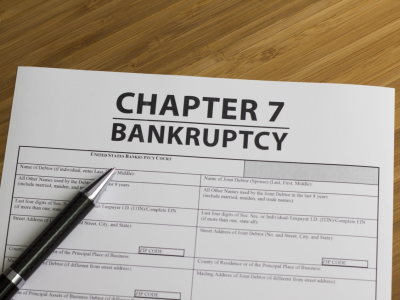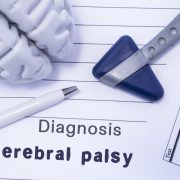Whiplash is one of the most common injuries sustained in car accidents in West Virginia. The sudden back-and-forth motion of the head and neck during a collision can damage muscles, tendons, ligaments, discs, and facet joints in the cervical spine. This can lead to severe neck pain, stiffness, headaches, and other debilitating symptoms.
While most people recover from whiplash within a few weeks, some develop chronic pain and debilitating headaches called cervicogenic headaches. This article provides an overview of whiplash, whiplash-associated disorders, cervicogenic headaches, their causes, symptoms, diagnosis, and treatment options.
What is Whiplash?
A rear-end car crash is frequently the cause of whiplash, which is defined as a sudden back-and-forth movement of the head that injures the neck. The abrupt motion causes excessive stretching and tearing of the muscles, tendons, and ligaments in the neck. Whiplash is also sometimes called a neck sprain or strain.
Whiplash injuries can range from mild to severe:
- Mild whiplash may cause neck pain, stiffness, and headache that goes away after a few days or weeks. This is called acute whiplash.
- More severe whiplash can cause longer-lasting headaches, neck pain, blurred vision, memory problems, and sometimes neurological symptoms in the arms and legs. This cluster of whiplash symptoms is called whiplash-associated disorders (WAD).
- The most severe whiplash injuries may include vertebral fractures, disc herniation, and spinal cord or nerve damage. These rare cases cause severe pain, neurological deficits, and disability.
Whiplash-Associated Disorders (WAD)
Up to 50% of people with whiplash injuries develop longer-term symptoms known as Whiplash-Associated Disorders (WAD). WAD refers to the chronic headaches and neck pain that some patients experience after whiplash trauma.
Symptoms of WAD include:
- Headaches, often starting at the base of the skull and radiating to the forehead.
- Neck pain and stiffness.
- Reduced range of motion in the neck.
- Pain or numbness radiating down the arms.
- Dizziness, ringing in the ears, vision changes.
- Cognitive and memory problems.
These post-whiplash symptoms are thought to be caused both by tears to muscles/ligaments as well as possible injuries to facet joints and intervertebral discs in the cervical spine. WAD symptoms often develop within the first 2 weeks after a whiplash injury but may take months or years to fully manifest. Chronic WAD can be severely debilitating and disabling.
Cervicogenic Headaches after Whiplash
Cervicogenic headache (CGH) is a common chronic headache syndrome associated with whiplash injuries. CGH refers to headache and neck pain caused by a disorder of the cervical spine and its components, including intervertebral discs, facet joints, and soft tissues.
CGH has the following characteristics:
- Pain starting at the base of the skull that radiates to the vertex, forehead or temples.
- Pain located on one or both sides of the head.
- Headache worsened by neck movement or posture.
- Headache eased by local anesthetic blockades of cervical facet joints or nerve roots.
CGH is referred to as pain originating from injured facet joints, intervertebral discs, or soft tissues of the upper cervical spine. Up to 20% of chronic whiplash patients develop cervicogenic headaches. Treatments for CGH include physical therapy, massage, analgesic medications, nerve blocks, and minimally invasive spine procedures.
Common Whiplash Headache Symptoms
Whiplash headaches can vary significantly in terms of timing, location, and severity. Here are some of the most common signs and symptoms:
- Pain beginning the morning after the accident and worsening throughout the day
- Constant, dull, aching head pain or a throbbing, migraine-like headache
- Pain concentrated in the back of the head that radiates to the forehead
- Headache pain sweeping up from the neck to the back of the head
- Headaches triggered or aggravated by neck movement, especially extension
- Headache accompanied by neck stiffness or shoulder pain
- Extreme sensitivity to light, noise, or strong smells
- Nausea or dizziness accompanying the headache
Seeking Early Treatment is Crucial
The sooner you start treatment after a whiplash injury, the better your chances of avoiding chronic pain. Here are some steps you should take immediately following a car accident in West Virginia:
- Get checked by a doctor: Even if you don’t have obvious injuries, see a doctor right away to document your condition. Whiplash symptoms sometimes take days or weeks to appear.
- Follow up with specialists: Get referrals to physical therapists, chiropractors, or other specialists who can properly evaluate and treat your whiplash injury.
- Start gentle movement exercises: Early range-of-motion exercises can help improve blood flow and reduce stiffness. But avoid any activities that cause sharp pain.
- Use ice/heat: Alternating cold and warm compresses can help relieve muscle spasms and inflammation. Apply ice packs to painful areas for 15 minutes several times a day.
- Take OTC medications: Anti-inflammatories like ibuprofen can help reduce pain and swelling in the early stages. But consult your doctor first.
- Get enough rest: Your body needs adequate rest to heal damaged tissues. Get as much sleep as possible and avoid using your neck more than necessary.
Legal Options For Whiplash Headaches Caused By Accidents
Post-accident headaches are no joke. Whiplash headaches usually start within 24-48 hours after the accident and center around the base of the skull, forehead, and temples. The pain can range from mild to debilitating and may be accompanied by dizziness, ringing in the ears, nausea, and sensitivity to light or sound.
The bad news is that whiplash headaches tend to persist. One study found that 43% of whiplash patients still battled headaches six months after their accidents. Suffering from consistent, unrelenting head pain can severely impact your ability to carry out day-to-day activities at work and home.
The good news is that the at-fault party owes you compensation for your whiplash injuries and headaches if they resulted from someone else’s negligence. Experiencing frequent whiplash headaches can warrant financial damages to cover your:
- Medical expenses (emergency treatment, pain medications, physical therapy)
- Loss of current or future earnings due to missed work
- Out-of-pocket costs (medical equipment, travel costs for treatment)
An experienced personal injury lawyer can help calculate what monetary value your whiplash headaches hold. They can also negotiate strongly on your behalf and take legal action if the insurance company provides an inadequate settlement offer.
Were you injured in West Virginia? Rest your case in the hands of the proven attorneys at Miley Legal serving Morgantown and Clarksburg. Offering free consultations, their team can review your case and advise you on the best path forward.












Comments